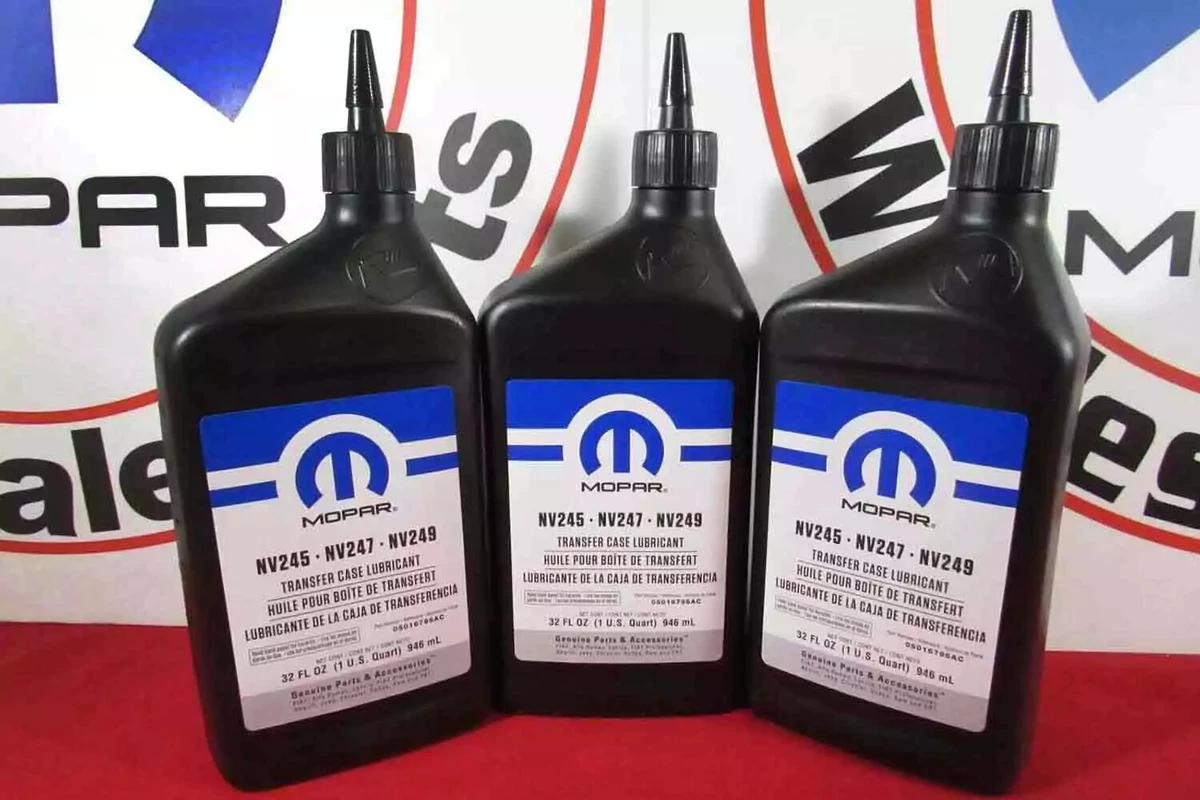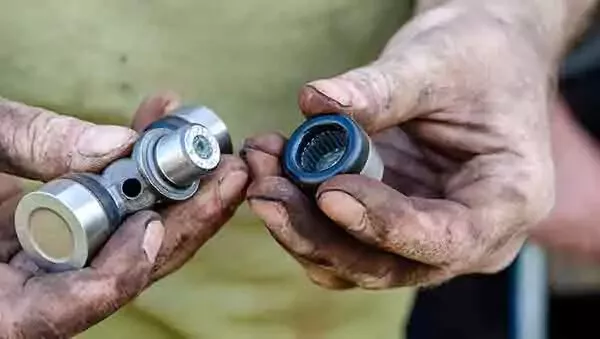
New transfer case fluid can make it easier to shift into 4WD.
If you are having trouble shifting in and out of 4WD in your truck or SUV, it may be time to change the transfer case fluid. It’s a beginner skill-level DIY job that takes less than 30 minutes. It should be performed at regularly scheduled intervals, about every 30,000 to 60,000 miles (depending on your driving environment). Buying the right fluid is straightforward.
Consult your owner’s manual to confirm the right type of transfer case fluid. Go to the eBay Parts Finder - opens in new window or tab.. Enter your year, make, model, engine, and trim to find the fluid that works in your vehicle.
What to Consider When Buying Transfer Case Fluid

Well-known OEM brands make a difference. You know that Mopar fluids work for Jeeps and Rams.
Compatibility is key. Start by reading the manufacturer’s specifications. Then, consider these factors.
Amount: Typically, transfer case fluid is sold by the quart. Purchase enough to fill your system, usually between one and two quarts.
Additives: Some fluids include additives that reduce wear and friction. The additives might also help your vehicle endure difficult driving and weather conditions. Check to see if the manufacturer recommends these types or if standard fluid is sufficient.
Brand: To ensure integrity, buy a well-known brand such as one by the original equipment manufacturer (OEM). That means buying Ford-branded fluid if you have a Ford, Mopar fluid for Jeeps and Rams, etc. To save money, you can choose a trusted aftermarket fluid from brands like Castrol, LiquiMoly, and Valvoline. Your owner’s manual may recommend a specific brand.
How much does transfer case fluid cost?
Expect to spend between $10 to $40 for one quart of transfer case fluid. Your vehicle may only require one quart. No filter is required in the transfer case. By doing the job yourself, you save about $75 to $150 in labor fees plus any markup on the fluid.
Is it better to buy conventional or synthetic transfer case fluid?
Synthetic offers heightened performance and protection in challenging conditions. We recommend synthetic transfer case fluid if you want to go longer between changes or travel in extreme temperatures. However, synthetic fluid costs more.
What’s the difference between transmission fluid and transfer case fluid?
Some vehicles call for a specified transfer case fluid that is not interchangeable. However, other models use automatic transmission fluid (ATF) or differential fluid in the transfer case. Read your repair manual to confirm what applies to your vehicle.
There are key differences between the two fluid types—even if they are interchangeable in your vehicle.
- Transfer case fluid is blue, green, yellow, or brown. It should be changed between 30,000 and 60,000 miles.
- Transmission fluid is red when it’s fresh and turns brown or black when it’s contaminated. It doesn’t need to be changed as often—between 60,000 and 100,000 miles.
Parts and Tools Related to Transfer Case Fluid Replacement

A hand-operated pump is useful when you can’t fit a bottle where it needs to go.
Hand-operated pump: Adding new fluid in the case can be challenging when space is limited. If you can’t fit a bottle where it needs to go, we recommend using a hand-operated transfer pump, which often costs less than $20.
Inspect the following items while you wait for the transfer case fluid to drain.
Drain and filler plugs: If they aren’t providing a good seal anymore, it’s time to replace them.
Seals and gaskets: These gaskets are prone to leakage and can be replaced at the same time.
U-Joints and CV joints: Inspect these components, which are put under a lot of stress during the power transfer to the axles.
When performing regularly scheduled maintenance, there may be other jobs to do at the same time. Consider changing the transmission or differential fluid. Some automakers use the same fluid for the transmission, differentials, and transfer case.
To drain and replace the transfer case fluid, you don’t need a lot of tools. The list includes washers for drain and fill plugs, a drain pan, sockets and ratchet, jack and jack stands, and shop towels for cleanup.
Share your feedback
This article is meant to provide general guidance only. Automotive maintenance, repair, upgrade, and installation may depend on vehicle-specifics such as make and model. Always consult your owner's manual, repair guide for specific information for your particular vehicle and consider a licensed auto-care professional's help as well, particularly for advance repairs.
































